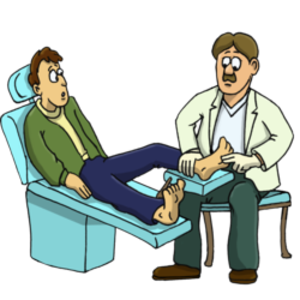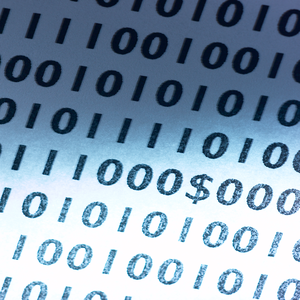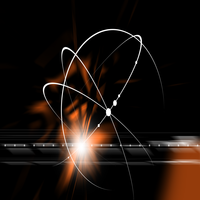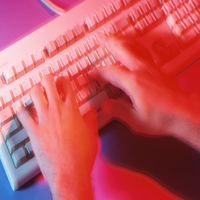T’ai Ch Ch’uan and Your Feet

One of the worries about getting older is that aging can adversely affect our balance and increases the chance that we can slip and fall. This is even more of a problem in people with loss of sensation in the soles of the feet due to diabetic peripheral neuropathy and other diseases. T’ai Chi Ch’uan has previously been shown to improve balance in healthy elderly adults.
A new study from the Biomedical Engineering Program, Milwaukee School of Engineering, Milwaukee, Wisconsin was just published in the journal Diabetes Technology and Therapeutics.
The aim of the study was to see if T’ai Chi improved both balance and sensory perception in the soles of the feet in healthy elderly adults and elderly adults with diabetes and sensory loss in the feet. Eighteen elderly people with a mean age of 73.1 years were tested for sensation and balance before t’ai chi training and again after 6 months of weekly sessions. Participants were grouped by their initial scores on tests of sensory perception, in order to calculate the effects of t’ai chi on sensory perception.
Plantar (soles of feet) sensation results showed that all the participants showed significant improvement in sensory ability with the 6 months of t’ai chi training. All groups also had a general improvement in all balance measures, with the greatest improvement seen in those subjects with large sensory losses. Hemoglobin A1c measurements – a standard way of estimating control of blood glucose – also decreased as a result of the intervention.
The study was small, but the effectiveness of t’ai chi training as a method of improving plantar sensation and balance in elderly adults with sensory loss, with and without diabetes, was impressive.
Another one of those things that is supposed to be impossible!
Even Neurons Need Friends

In many neurological diseases, including multiple sclerosis (MS) and some types of neuropathy, myelin – the insulation that covers and surrounds most of the larger nerves – is damaged or deranged.
Scientists at the Weizmann Institute of Science in Rehovot, Israel, working with colleagues in the United States, recently reported finding an important new line of communication between cells in the nervous system that is crucial to the development of myelinated nerves. This new discovery may eventually help us to restore the normal function of the affected nerve fibers.
Nerve cells (neurons) have long, thin extensions called axons. The longest of these axons is in the verves supplying the feet, and they can be over three feet or more in length. The larger axons are covered by myelin, which is formed by a group of specialized cells called glia.
Glial cells move around the axon, laying down the myelin sheath in segments, while leaving small nodes of exposed nerve in between. Myelin provides protection for the delicate axons, and it also allows nerve signals to jump rapidly between the gaps or nodes, increasing the speed and efficiency of the transfer of electrical signals down the axon. When myelin is missing or damaged, the nerve signals cannot skip down the axons, leading to abnormal function of the affected nerve and eventually the now naked nerve may degenerate and die.
In research published in Nature Neuroscience, Elior Peles, Ivo Spiegel and their colleagues in the Molecular Cell Biology Department at the Weizmann Institute and in the United States, provided a new insight into the mechanism by which glial cells recognize and myelinate axons.
They found a pair of proteins that pass messages from axons to glial cells. These proteins, called Necl1 and Necl4, belong to a larger family of cell adhesion molecules. The whole class of cell adhesion molecules does exactly that: they sit on the outer membranes of cells and provide the glue that helps them to stick together. Even when removed from their cells, Necl1, which is normally found on the surface of the axon, and Necl4, that is found on the glial cell membrane, adhere together very tightly. When these molecules are in their natural homes of the axon and glial cell, they not only create physical contact between axon and glial cell, but also serve to transfer signals to the interior of the glial cells, initiating changes needed to undertake myelination.
The scientists found that production of Necl4 in the glial cells rises when they come into close contact with an unmyelinated axon and as the process of myelination begins. If Necl4 is absent from the glial cells, or if they blocked the attachment of Necl4 to Necl1, the axons that were in contact with the glial cells did not myelinate.
This is an exceptionally important discovery. Most of the approaches that we use for treating MS, peripheral neuropathy and other degenerative diseases, can often help with symptoms and may slow but not cure the diseases. But if we can understand the mechanisms that control the process of wrapping the axons by their protective sheath, we may be able to recreate that process in patients.
Diabetes, Inflammation and the Heart

One of the most worrying signs in people with type 1 diabetes is damage to the nerves supplying the heart. This is called cardiovascular autonomic neuropathy, and one of its first signs is a reduction in the normal heart rate variability (HRV).
It has been known for many years that people with both type 1 and type 2 diabetes have low grade inflammation, and inflammation can have profound effects on the activity of the autonomic nervous system.
A study from Sabadell in Spain has tried to sort out these links in a study of 120 people with longstanding type 1 diabetes.
They measured a great many things including tumor necrosis factor, alpha-receptors 1 and 2, IL-6, and C-reactive protein; insulin resistance and HRV in response to deep breathing and the Valsalva maneuver” forcibly exhaling against with mouth and nose closed.
They did indeed find a link between low-grade inflammation and early alterations in the nerve supply to the heart.
This is important information: when we proposed that inflammation might be an important player in diabetes back in the 1980s, it was greeted with disbelief. Twenty years on it looks as if we might have a whole new line of treatment on the horizon, which will include nutrition and exercise as well as supplements and medications.
Acupuncture and Peripheral Neuropathy

Neuropathic pain is one of the toughest problems to deal with.
I have had more relative failures in trying to help this problem than any other.
So I was very interested to see a pilot study that has evaluated the therapeutic effect of acupuncture on peripheral neuropathy (PN) as measured by changes in nerve conduction and assessment of subjective symptoms.
One hundred and ninety-two consecutive patients with PN as diagnosed by nerve conduction studies (NCS) were evaluated over a period of 1 year. Of 47 patients who met the criteria for PN of undefined etiology, 21 received traditional Chinese acupuncture, while 26 received medical care but no specific treatment for PN. 76% of the acupuncture group improved symptomatically and objectively as measured by NCS, while only 15% of the control group did so. 14% of the acupuncture group showed no change and 10% showed an aggravation, whereas in the control group 27% showed no change and 58% an aggravation. Subjective improvement was fully correlated with improvement in NCS in both groups.
These numbers are stunning. I might have some small quibbles about the way that the study was dne, but the results are impressive.
A second study compared Chinese and Japanese acupuncture for treating painful diabetic neuropathy. Both treatments improved pain, but only the Chinese style produced an objective improvement in the ability to feel in the affected areas.
These findings are remarkable: peripheral neuropathy can be a bear to treat, and according to the received wisdom, neither the pain nor the sensation should be able to get better. In the second study the patients were only treated once a week for ten weeks. In China such patients get daily treatments, and people in the West who treat neuropathy with acupuncture normally recommend treatments at least two or three times a week.
Both of these studies were small, but they are very encouraging.
If they are confirmed, we may to re-think another one of those, “Everyone knows that..” statements. This one about neuropathy: That is supposed to be untreatable and irreversible.
That is why the next set of studies will be super-rigorous,
They need to be.
If confirmed, we are going to be re-writing the textbooks.
Neurological Complications of Gastric Bypass Surgery

Our bodies are highly complex systems. They are not just bags of randomly assorted organs. So tinkering with one part of the system can have an impact in an entirely different part of the body. Many of us have worried for some time about the long-term consequences of gastric bypass surgery for weight loss. We know that some people who have had the surgery develop “substitution addictions.” If they had a real addiction to food before the surgery, after it they may begin to develop an addiction to something else, such as drugs or alcohol.
Now neurologists at the University of Arkansas for Medical Sciences (UAMS) in Little Rock have reported the results of a ten-year study found a link between gastric bypass surgery and several serious neurological conditions.
The study was published online May 22 in the medical journal Neurology and concludes that patients who undergo gastric bypass surgery, also known as bariatric surgery, are at risk for long-term vitamin and mineral deficiencies and as a result may develop a variety of neurological symptoms.
We know that ever more of these operations are being done every year, and so long as people are motivated they are usually successful in reducing weight. But they are not without risk, and we always have to balance that risk against the risk of being morbidly obese. This work is important because it suggests that there is an extra risk about which we previously knew very little. Many of the complications that patients experience affect the nervous system, and they are often disabling and irreversible.
More than 150 patients who came to the UAMS Neurology Clinic following gastric bypass were included in the report. In 26 of these patients a link between the surgery and their neurological condition was found.
All of the patients involved in the study had previously undergone what is known as the Roux-en-Y gastric bypass procedure in which a small stomach pouch is created by stapling part of the stomach together and bypassing part of the small bowel, resulting in reduced food intake and a decreased ability to absorb the nutrients in food. The interval between surgery and onset of neurological symptoms ranged from 4 weeks to 18 years.
The neurological problems involved many different parts of the nervous system, and the symptoms included confusion, auditory hallucinations, optic neuropathy, weakness and loss of sensation in the legs, and pain in the feet, among other conditions. None of the patients had prior neurological symptoms.
Many of the patients also experienced multiple nutritional abnormalities, especially low serum copper, vitamin B12, vitamin D, iron and calcium.
This study underlines something very important. Many heavy people are actually malnourished, because they eat the wrong things and an excess of fat in the diet can create problems in the absorption of some vitamins and minerals. In addition, surgery like this can cause a form of malabsorption.
It is therefore essential to make sure that people who have this kind of surgery have an adequate long-term intake of vitamin and mineral supplements to prevent these neurological complications. It is important for everyone to know about these potential problems and to be on the lookout for neurological symptoms.
Carpal Tunnel Syndrome and Diabetes

Carpal tunnel syndrome is a relatively common neurological problem in which the median nerve is compressed in the wrist.
The classical symptoms are:
- Tingling, numbness or burning in the fingers or hand, especially thumb, index, middle or ring fingers, but not your little finger. It is most typically present on waking, but can occur after using the hands. Some people “shake out” their hands to relieve their symptoms.
- Pain radiating or extending from the wrist up the arm to the shoulder or down into you’re the palm or fingers, especially after forceful or repetitive use.
- A sense of weakness in the hands and sometimes a tendency to drop things
- Numbness, especially in the tips of the thumb, index, middle and ring fingers.
- Eventually the small muscles that control the thumb, index and middle fingers can weaken and atrophy.
In many people there is not obvious cause, although it is more common in women approaching menopause, and these days it can be one of the problems associated with using a computer mouse of keyboard for long periods. Every student of health care learns that there is a great long list of causes including:
- Pregnancy
- Rheumatoid arthritis
- Trauma
- Hypothyroidism
- Diabetes
- Amyloidosis
- Acromegaly
- Myeloma
- Tumors
Although I was taught about carpal tunnel syndrome not just as a cause but also as a predictor of diabetes more than 30 years ago, it has been forgotten by some non-specialists.
There is some new research from King’s College in London that has suggested that carpal tunnel syndrome may be a harbinger of diabetes.
As many as 20% of people with diabetes have a compression neuropathy such as carpal tunnel syndrome, and in people with limited joint mobility – a complication of diabetes – the incidence may be as high as 75%. The new research indicates that carpal tunnel syndrome may precede the diagnosis of diabetes by up to 10 years. The work was based on an analysis of 2,655 people who were diagnosed with type 2 diabetes in 2003-2004. The researchers excluded people with other known risk factors for carpal tunnel syndrome. The relative risk for subsequently developing diabetes was 1.63.
This research shows once again that diabetes can sometimes make its presence felt years before it has been formally diagnosed. A study published in 2003 found that 56% of people with peripheral neuropathy of unknown cause actually had abnormal glucose tolerance tests.
Earlier this year, researchers form the Netherlands did a retrospective review of 516 people with carpal tunnel syndrome, and found only two people with diabetes. They therefore recommended that routine screening for diabetes was not worthwhile in otherwise typical carpal tunnel syndrome.
I disagree with them.
I think that it would be wise to screen people with carpal tunnel syndrome for any disturbances of glucose metabolism, including insulin resistance, and if they are at a particularly high risk of developing diabetes, it would be worth going ahead and doing a glucose tolerance test. We don’t often do them these days, but this would be one of those times.
Multiple Sclerosis
Multiple sclerosis (MS) can be a horrible illness that does not respect age or class. Neil Cavuto, Captain Beefheart and Montel Williams are just three well-known people who have said that they have the illness. Here is a list of many other sufferers.
MS is a chronic, inflammatory disease that affects the central nervous system (CNS). MS can cause a wide variety of symptoms, including changes in sensation, visual problems, muscle weakness, depression, difficulties with coordination and speech, severe fatigue, and pain. The classic pathology is what is known as demyelination (loss of the myelin that insulates nerve cells). Since myelin is white, the lesions are typically fuond in the white matter of the CNS.
The cause remains unknown, though I shall have more to say about some of the MS theories. Amongst the candidates have been autoimmunity, slow viruses, myelinic enzymes and polio vaccination.
Most people begin to experience symptoms between 20 and 40 years old, and rarely after 50. The onset is usually insidious, though every now and then someone starts with sudden onset of a catastrophic neurological or visual problem. Symptoms are usually vague and the diagnosis is often missed in the early stages. Females are affected slightly more than males. MS seems to be a disease of temperate latitudes in both the Northern or Southern hemispheres and is rarely seen in equatorial regions. This association with latitude has fueled some of the viral theories as well as ideas to do with the impact of decreasing sunlight on vitamin D and cell membrane function.
One of the things that makes the disease such a great masquerader is that it is typically marked by apparently random exacerbations and remissions. As the disease progresses, the remissions become less complete and permanent deficit more apparent.
There is an enormous research literature on MS: over 35,000 papers at last count. But there have been some recent highlights.
There has recently been a major breakthrough in discovering the mechanism by which myelin forms. The finding from the Keck School of Medicine of the University of Southern California and the Institut de Recherches Cliniques de Montreal in Canada, could have a major impact on the treatment of multiple sclerosis and demyelination as a result of spinal cord injuries.
Jonah Chan and his colleagues showed that a protein, Par-3, is at the base of the myelination process. This protein becomes localized to one side of the myelin-forming cells that are known as Schwann cells, upon contact with the axon that is to be myelinated. Par-3 acts like a kind of molecular scaffold to set-up an "organizing centre" that brings together the key proteins essential for myelination, in particular a receptor for a molecule that is secreted by the neurons.
The researchers found that when they disrupted this organizing centre, cells could not form myelin normally. Importantly, their discovery demonstrates that Schwann cells need to become polarized so that they know which side is in contact with the axon to initiate wrapping and to bring essential molecules to this critical interface.
These studies open up some new possibilities that should help to identify other components that are recruited at the organizing center set-up by Par-3. In multiple sclerosis, or after injury, Schwann cells can re-myelinate axons of the central nervous system to some degree. Therefore, these experiments bring about the possibility that manipulating the Par-3 pathway might allow for more efficient re-myelination of damaged or diseased nerves.
In a separate study researchers from the Virginia Commonwealth University researchers have identified a unique mechanism of action of a new drug that shows great promise for the treatment of MS.
The researchers reported the unique action of FTY720, or Fingolimod, an immunosuppressant drug that was already known to affect the functioning of the immune system by preventing the egress of white blood cells from the lymph nodes into the blood. The article was published in Blood: The Journal of the American Society of Hematology, that appeared online on Sept. 28.
In this study, the research team found that FTY720 also inhibited the activity of a key enzyme called cPLA2, which is necessary for the production of inflammatory mediators, known as eicosanoids. Eicosanoids drive inflammatory disorders such as asthma and multiple sclerosis.
The inhibition of cPLA2 would shut down the entire inflammatory pathway, possibly without the side-effects caused by medications such as Vioxx, that have been withdrawn from the pharmaceutical market.
FTY720, is a drug developed by Novartis, has shown considerable therapeutic effects in a recent small, placebo-controlled clinical trial involving patients with relapsing multiple sclerosis. The study was published in the September 2006 issue of the New England Journal of Medicine by an international research team.
I could easily select a dozen more important papers published in the last year, but I am particularly interested in basic research that teaches us something new, and treatments that could fit into a comprehensive Integrated plan of treatment.
I am going to post more about the causes of this illness as well as less orthodox approaches to help the physical, psychological, social, subtle and spiritual aaspects of these illnesses.
Arsenic and Water Safety
Here is a new study that may turn out to be one of the most important of the year.
Tens of millions on people around the world, most particularly in Bangladesh, are forced to drink water containing dangerously high amounts of arsenic. The very same stuff that has been used by countless poisoners.
The classic symptoms of arsenic poisoning are:
- Headache
- Abdominal pains
- Vomiting
- Difficulty breathing
- Light headedness
- Delirium
- Neuropathy
- Stroke
- Skin lesions: usually thickening of the skin of the palms and soles with wart-like excresences
- Reduced production of red and white blood cells
- Increased risk of cancers of the lung, skin, bladder, liver, kidney and prostate
- Death
The exact pattern of symptoms depends on the acuity of the exposure, the amount of arsenic to which a person is exposed and the individual’s own makeup.
The new research – published this week in the journal Science – is from Rice University’s Centre for Biological and Environmental Nanotechnology in Texas, and it may give us a quick and cheap way of getting most of the arsenic out of drinking water. The investigators used minute particles of iron oxide – very similar to common rust – to bind large amounts of arsenic. The iron oxide particles are really tiny: just 12 nanometres (billionths of a metre) across, about 5,000 times smaller than the width of a human hair. When mixed into contaminated water, the tiny crystals became coated with the poison and began behaving like iron filings. The iron oxide/arsenic combination can then be removed from water using a simple hand-held magnet.
One of the investigators, Professor Doug Natelson had this to say, "The idea of using magnetic particles to filter and clean water is not particularly new. The trick here is that these particles are very, very small, which means they’re essentially all surface. So the arsenic sticks to the surface of the particles, and what we’ve found is that when the nanoparticles are in the right range of sizes, you can pull them out of solution with a relatively small magnetic field gradient that you could get from, say, a permanent magnet."
As an additional refinement, the scientists needed to develop a technology that would be usable in one of the poorest parts of the world. In one experiment flakes of rust were made into nanoparticles by heating them in coconut or olive oil at 350C. They could then be used in water purification.
This is excellent news, and if confirmed, it could save hundreds of thousands if not millions of livees, and unspeakably awful chronic ill health.
Recognizing Restless Legs
I’ve recently written a couple of articles about restless legs syndrome (RLS), following which I got this question:
"Dear Dr. Petty, I’ve thought that I’ve got RLS, and so did my doctor, but I’ve just heard about something called akathisia, and another doctor has told me that I might have that instead. Is there any way to tell them apart? The doctor seemed to think that they were the same thing. Have you heard of akathisia, and are there any tips for working out what I’ve really got?"
Yes, I do indeed know what akathisia is, and this is a good question. I’ve seen many experts who have mixed up the two conditions. Both may be present in the same person, and there may be some small degree of overlap, but an experienced neurologist should be able to tell them apart without too much trouble.
Akathisia is most commonly seen in people taking certain types of medication that act on the brain. However something indistinguishable from akathisia was described three hundred years before we had any of these medicines. So medications are most certainly not the only cause.
I’d like to direct you to a new article by our friends over at Psychiatric Resource Forum, where you will find an article that goes through the clinical features and causes of akathisia and the nine classical features that distinguish akathisia from RLS.
Let me know if that does not give you the answer that you need, and I’ll happily write a more detailed account of how to distinguish the two.
Good luck, and let me know if I can help you further.
Peripheral Neuropathy and Integrated Medicine
We have already discussed some of the causes and conventional treatments for peripheral neuropathy.
Unfortunately many people are not much helped, and it is good to know what else may assist them. And also what may not: sadly people suffering from chronic illnesses often become the victims of people selling treatments that may have scant chance of success.
There is not much research to support most of these approaches, which we use in tandem with conventional medicine. However, I’ve used all of these approaches and found that each has helped some people. The problem, as with most of conventional medicine, is in knowing who will respond to what. Often the key is to use several approaches in combination. That is where you need a specialist in Integrated Medicine who can put together the right “package” of treatment for the individual. What we don’t want to do is use a kind of “blunderbuss approach,” where we hit people with everything at once.
- Diet and exercise may help, particularly in diabetic neuropathy, where improved metabolic control will reduce – but not abolish – the risk of neuropathy, and may improve pre-existing neuropathic pain.
- Some naturopaths in Europe recommend using parsley, celery and carrot juices. Not something that I’ve seen work, but some people tell me that they’ve found them helpful.
- There has been a lot of research on the use of alpha lipoic acid and vitamins B and E, particularly in diabetic neuropathy: some positive and some negative. Each has sometimes helped in clinical practice, though you have to be a little careful with vitamin E: it can impair the clotting system, and cause diarrhea and transient elevations in blood pressure.
- Acupuncture – traditional Chinese, “Western Medical,” and electro-acupuncture – have been used a lot in peripheral neuropathy. There have been some positive studies in painful diabetic, HIV-associated and chemotherapy-induced neuropathy. None of the studies has been perfect, but they tend to support the clinical impression that man people are helped – some greatly – but few are cured with acupuncture. There have also been negative studies. There are also some positive studies from China, but only a few have been translated in their entirety. There are often two big problems with research done in China: many Chinese investigators feel that it’s unethical to include a control group, and their studies tend to use endpoints like “cured” or “partially cured,” rather than objective rating scales. I have used it in peripheral neuropathy, but it’s extremely important to use scrupulous technique, since people with neuropathy are at increased risk of getting skin breakdown and ulcers, especially if they also have any vascular compromise. Many of us have also found that it can be helpful in compression neuropathies, like carpal tunnel syndrome. There’s recently been some fascinating research using brain imaging in acupuncture treated carpal tunnel syndrome.
- Herbal remedies are used by about a fifth of people with neuropathy, but I’ve never had much luck with them. Some herbalists tell me that they have good results with an array of different herbs, though there is little objective evidence that they work.
- There have been clinical reports and at least one research study on the use of magnet therapy in neuropathy. Earlier this year there was an article in the British Medical Journal that was critical about magnet therapy in general. The article provoked one of the most vigorous debates that I’ve seen in along time. I’ve not seen it help, but there are some people who swear by it. And other who swear at it!
- There have been many attempts to use electrical fields to help neuropathy, from the conventional transcutaneous electrical nerve stimulation (TENS) boxes, to yet more variations on electro-acupuncture. Some people are helped, and these are good extra tools.
- Many homeopathic remedies have been used in neuropathy. Homeopathy is a highly individualized form of therapy: no two patients will get the same remedies. But some of the most commonly used remedies are Agaricus, Alumina, Arsenicum album, Natrum muriaticum, Phosphorus and Plumbum. If you live somewhere that there are good homeopaths, homeopathy is an option to consider, despite the dearth of good research into its use in neuropathy.
- It is important not to neglect the psychological aspects of neuropathy: people can become profoundly depressed by the intractable pain, and sometimes psychotherapy and antidepressants can be a helpful.
- Finally, ask yourself what the neuropathy is trying to teach you. There is no problem that comes out of a clear blue sky, and it is always valuable to look beyond the physical problem itself to its meaning and purpose.
If you are not having success from conventional medicine alone, or if you don’t care for conventional medicine, then discuss these options with a professional, use your intuition to guide you, and let us know if you have success.






